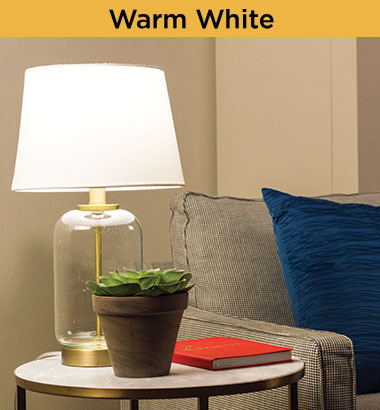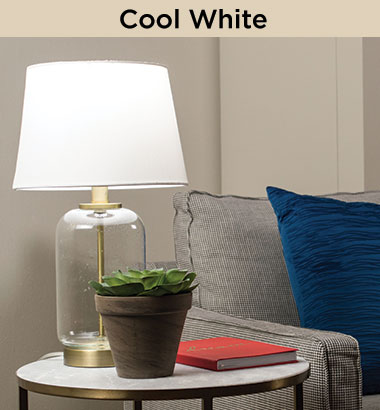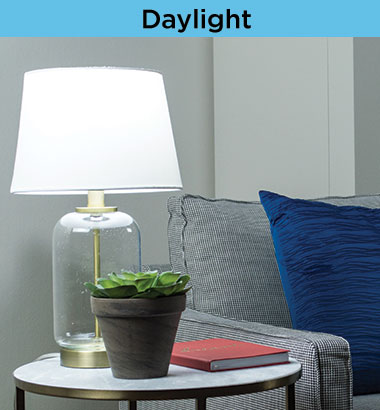
What is color temperature?
- Color temperature is a way to describe the light appearance provided by a light bulb. It is measured in degrees of Kelvin (K) on a scale from 1,000 to 10,000.
- Typically, Kelvin temperatures for commercial and residential lighting applications fall somewhere on a scale from 2000K to 6500K.
- A light bulb’s color temperature lets us know what the look and feel of the light produced will be.
- The color temperature of a light bulb is assigned using the basis of correlated color temperature (CCT).
- For example, if you heat up a metal object, the object appears to glow. Depending on the Kelvin temperature that the metal object is being heated at, the glow will be various colors, such as orange, yellow or blue. The color temperature of light bulbs is meant to replicate the Kelvin temperature of the metal object.
-
What color temperature is right for me?
Understanding Kelvin temperature (K) makes it easier to choose lighting that gives you the look and feel you want.



Color Temperature
(KELVIN) | 2700K | 3000K | 5000K |
| Light Appearance |
Warm White |
Warm White |
Cool Daylight |
| Ambience |
Cozy, inviting |
Warm, welcoming |
Crisp, invigorating |
| Best for |
Living rooms, kitchens,
bedrooms |
Bathrooms, entryways,
outdoor |
Basements, garages |
Table/floor lamps,
pendants, chandeliers |
Vanities,
overhead lighting |
Task lighting,
security lighting |
- At the lower end of the scale, from 2000K to 3000K, the light produced is called “warm white” and ranges from orange to yellow-white in appearance.
- Color temperatures between 3100K and 4500K are referred to as “cool white” or “bright white.” Light bulbs within this range will emit a more neutral white light and may even have a slightly blue tint.
- Above 4500K brings us into the “daylight” color temperature of light. Light bulbs with color temperatures of 4500K and above will give off a blue-white light that mimics daylight.





